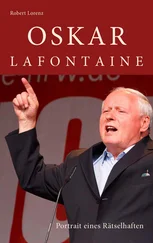Hitler, who saw Blaskowitz’s first memo, called his ideas childish. According to the Führer, you could not fight a war using Salvation Army methods. The army leadership responded weakly to Blaskowitz’s complaints and worked out a compromise with Himmler and General Fedor von Bock sent a memorandum to all army commanders that decried the “unfortunate misinterpretations” of the security forces in Poland but said that their “‘otherwise uncommonly harsh measures towards the Polish population of the occupied areas’ were justified by the need to ‘secure German Lebensraum and the solutions to ethnic political problems ordered by the Führer.’” In the spring of 1940, Himmler spoke to senior army leaders in Koblenz and said that though he never saw such harsh actions himself, the policies were necessary to deal with the subversive actions of Polish nationalists and Bolsheviks. Though Blaskowitz remained in the army, he held secondary posts and was never promoted to Generalfeldmarschall . 90
Within days after the Wehrmacht had defeated the last pockets of Polish resistance in early October, plans began in earnest for the final territorial realignment of German-occupied Poland. Wilhelm Stuckhart, a state secretary in the Reich Interior Ministry, prepared several decrees for Hitler dealing with Polish regions that were to be integrated into the Greater Reich and the creation of a General Government for central and southern Poland. With Hitler’s approval, the new General Government for the Occupied Areas of Poland (Generalgouvernement für die besetzten polnischen Gebiete) was to come into existence on October 26, with Hans Frank as governor general (Generalgouverneur). Part of northwestern Poland was integrated into the Danzig-West Prussia Reichsgau under Reichsstatthalter and Gauleiter Albert Forster, and East Prussia was governed by Gauleiter Erich Koch. The area around the Polish city of Łódź was integrated into the Warthegau under Reichstatthalter and Gauleiter Arthur Greiser, and eastern Upper Silesia became East Upper Silesia. Two years later, East Upper Silesia was divided into two Gaue: Lower Silesia, its capital in Breslau (today Wrocław); and Upper Silesia, its capital in Kattowice (Katowice). 91
Within weeks after Oskar Schindler arrived in Kraków, the creation of the General Government, with Kraków as its capital, was almost completed. Hitler had personally chosen Hans Frank to rule the new General Government. For the next five years, Schindler worked with officials close to Frank and lived literally in the shadows of Frank’s headquarters and official residence, Wawel Castle. Born in Karlsruhe in 1900, Frank was a legitimate “Old Fighter” who joined the Nazi Party in the fall of 1923. A law student in Munich, he took part in the legendary Beer Hall Putsch on November 8 and 9, 1923, when Hitler tried unsuccessfully to seize control of the Bavarian state government. He became Hitler’s personal lawyer and founded what later became the National Socialist League of Law Guardians (NSRB; Nationalsozialistischer Rechtwahrerbund ). As the Nazi’s top lawyer, Frank was involved in several thousand cases involving the Nazi Party before Hitler’s accession to power in 1933. 92
Frank won a Reichstag seat in the 1930 elections and served as Bavarian Minister of Justice from 1933 to 1934. He created the Academy for German Law (Akademie für deutsches Recht) in 1933 and served as its president until 1941. In 1934, Frank became a Reich Minister without Portfolio. Yet despite his numerous positions and awards, Frank never entered Hitler’s inner circle. Generally, Hitler disliked lawyers. More important, throughout his Nazi career, Frank made moves and statements that alienated the Führer. For example, in 1934, Frank argued that the SA leaders murdered in the Röhm Purge (Night of the Long Knives) should have received trials. 93
At a distance, none of this seemed seriously to affect Frank’s career. When the war began, he had joined the reserve battalion of the Potsdam Ninth Infantry Regiment. When he became the chief administrative head (Oberverwaltungschef) of the Wehrmacht’s occupied Polish territories, he lobbied hard for the governor general’s position and hoped it would increase his power. Even before he became governor general, he began to transform the administrative structure he had inherited from the military.Chaos abounded, which later worked to Oskar Schindler’s advantage. Technically, only Frank and Hermann Göring, the chair of the Ministerial Council for the Defense of the Reich (Ministerrat für die Reichsverteidigung), could issue decrees in the General Government. Yet it was not Göring, who was also head of the Four Year Plan (Vierjahresplan), which oversaw economic war planning, who became a threat to Frank. Early on, Göring made Frank his defense commissioner in the General Government to oversee his interests there. Instead, the threats came from elements in the Party, government, and military who longed for access to the General Government’s resources and manpower. 94
Frank and the SS in the General Government
Frank brought considerable power and prestige to his position as governor general. From his perspective, he was answerable only to Hitler and tried to adopt the Führerprinzip of absolute authority under one leader throughout the General Government. To underscore his imperial pretensions and to reduce the significance of the Poles’ modern capital, Warsaw, Frank chose Kraków, the political and intellectual seat of Polish kings, as the capital of the General Government. He chose as his official residence Wawel Castle, the medieval home of Poland’s Catholic prelates and monarchs. But Frank preferred to spend as much time as possible in the neo-Gothic castle once owned by the Polish architect Adolf Szyszko-Bohuzs on the outskirts of the city in Przegorzały overlooking the Vistula River. Nazi Party officials in Berlin jokingly referred to the Government General as the “Frankreich” (Hans Frank’s kingdom), a play on the German word for France and a reference to the early medieval German-French kingdom. Frank’s imperiousness affected his family. His wife, Brigitte, saw herself as the “Queen of Poland” and acted out the part in a most corrupt way; in fact, charges of corruption against Frank and his family seriously undermined his authority. In the spring of 1942, Frank met with Hitler, Dr. Hans Lammers, the head of Hitler’s Reich Chancellery, and Martin Bormann, the Führer’s alter ego and private secretary, over charges of corruption. When Frank promised to reform, particularly with regard to his wife’s family, Hitler seemed satisfied. Frank got away with his crimes because other Nazi officials, who were as corrupt as Frank, feared that pressing their charges too firmly against him could backfire. We shall see that this was not the last of Frank’s troubles with his enemies or with the Führer. 95
Frank’s cronies in crime and genocide were the officials he appointed to help him run the General Government. His first deputy governor was Arthur Seyß Inquart, an Austrian-trained lawyer who had earlier served as the Reich governor (Reichsstatthalter) of Austria and Reich Minister without Portfolio. After the conquest of The Netherlands in the spring of 1940, Seyß Inquart became the Reich Commissioner for the Netherlands, a position he held until the end of the war. In the fall of 1945, Seyß Inquart and Frank were tried and convicted of several of the four counts of the 1945–1946 Nuremberg trial of twenty-two major Nazi war criminals: conspiracy, crimes against peace, war crimes, and crimes against humanity. Both were hanged on October 16, 1946, in Nuremberg. 96
Читать дальше












